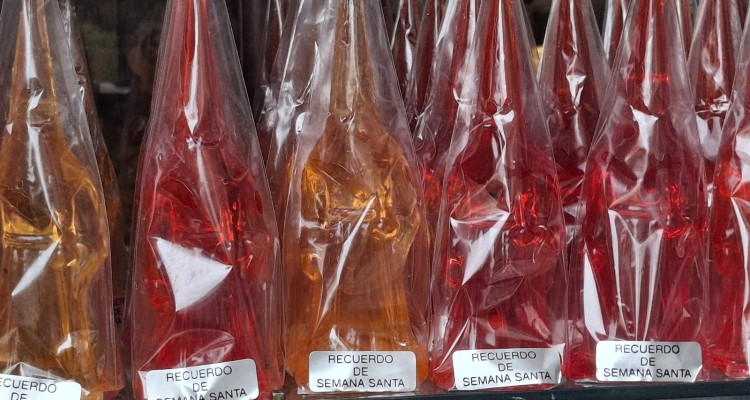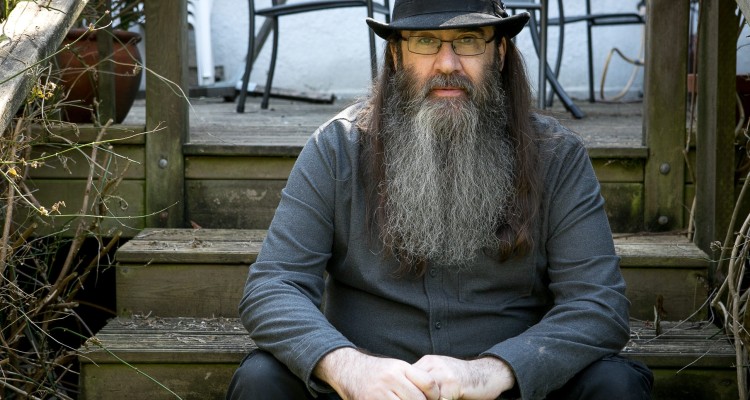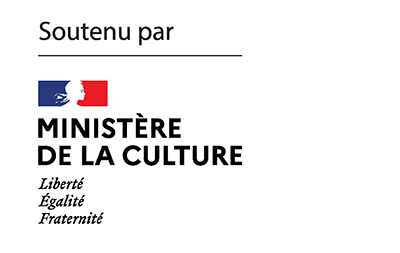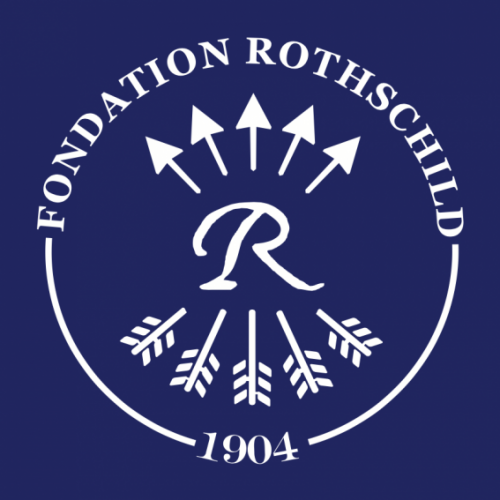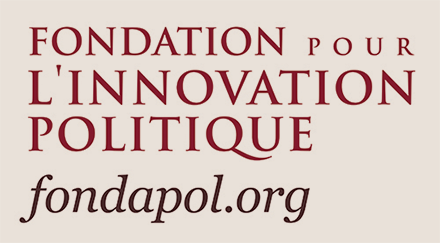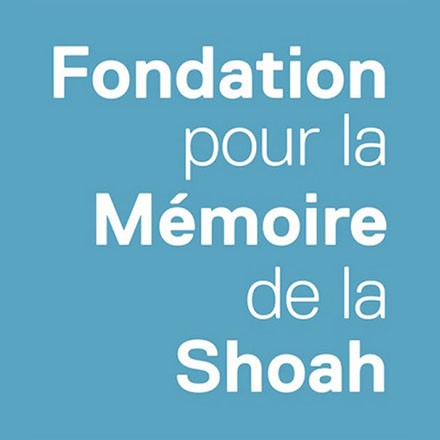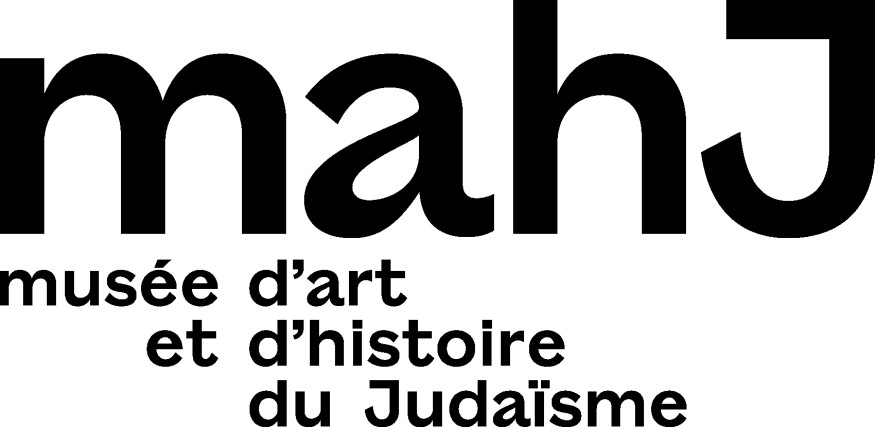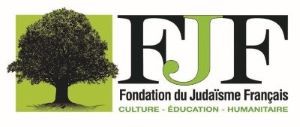The history of relations between Jews and Ukrainians came back with insistence from the beginning of the war initiated by Putin. It is an essentially tragic history, which Boris Czerny revisits, but reminding us that it is not limited to acts of violence. Through the evocation of Dovbush, a popular hero of the Carpathians, and of Rabbi Israel Ben Eliezer, known as the “Baal Shem Tov”, he focuses on the web of linguistic and cultural exchanges that demonstrate the richness of the links between Ukrainians and Jews and that constitute the complex material of a common past.
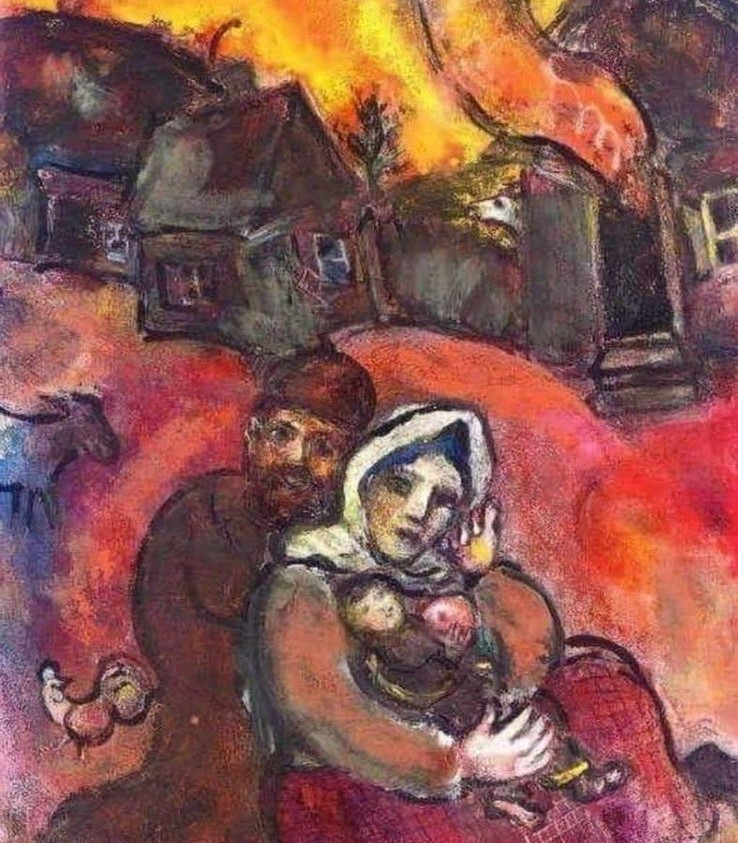
Since February 24 and the beginning of the Russian invasion of Ukraine, the question of the relationship between Jews and Ukrainians has come back with insistence. By justifying the launch of the “special operation” – a euphemism used in Russia to designate the conflict – by the need to “denazify” Ukraine, Putin has established in his speeches a direct link between the Second World War and his fight against Kiev. Continuing a rewriting of history begun some twenty years ago, he obscures the participation of the other populations making up the USSR in the fight against Hitler’s Germany as well as the considerable loss of human life suffered in particular by Ukraine, which was at the centre of German war plans[1]. Taking up an argument already used before him by Stalin, Putin attributes to Russia the main role in the fight against Nazism. Ukraine, on the other hand, apparently embodies collaboration with the Nazis. The current Ukrainian leadership is described as “Banderaist” – named after the nationalist leader Stepan Bandera (1909-1959), who created a Ukrainian legion and placed himself at the service of Nazi Germany.
The Jewish theme at the centre of the conflict between Russia and Ukraine
The Ukrainian authorities oppose the Russian propaganda with a counter-narrative that also contains references to the Second World War: denunciation of the Russian bombing of the Babi Yar site where, on 28 and 29 September 1941, more than 30,000 Jews from Kiev were massacred, and the use of the term genocide to describe the rapes and other acts of violence committed by Putin’s soldiers on Ukrainian soil. The purpose of this discourse is to prove that the Russians are the continuators of Hitler’s ideology. As proof, the Ukrainians argue, Russia is attacking a country whose president, Volodymyr Zelensky, has Jewish origins. This argument was brushed aside by Foreign Minister Sergei Lavrov, who, in an interview with Italian television on 2 May, declared that “Hitler also had Jewish blood”. This allegation provoked a strong reaction from the Israeli authorities who were “forced” to leave their “neutrality” towards the belligerents.
Until then, Jerusalem had been keen to spare the Russians because of their presence in Syria and their links with the leaders of Hamas. Moreover, by his speech on 20 March in the Knesset, Zelensky had practically made the Israeli deputies unanimous against him. The Ukrainian president had said, among other things: “70 years ago, Ukrainians saved the Jews. You know in your heart what you have to do now”. His speech was labelled as negationist and he was reminded of the obvious: during the Shoah, Ukrainians were more on the side of the executioners than of the Jewish victims.
All these facts show how the Jews occupy the place of the “absent-present” in the Russian-Ukrainian conflict. They are not physically present, but everyone talks about them. Their absence reflects a tragic reality. The Jews, who numbered just over one and a half million on the eve of the Second World War in what is now Ukrainian territory, were still half a million on the eve of the collapse of the USSR. According to a 2020 study, there are only just over 250,000 Jews in Ukraine eligible for Israeli citizenship today.
Ukrainians are not all atavistic anti-Semites, neo-Nazis, as the Russian leadership would have us believe. And contrary to Zelensky’s assertion, the vast majority of Ukrainians did not save Jews during the Holocaust. At best, they watched the “burning of the ghetto” without reacting, indifferent. But beyond these assertions, the centrality of the “Jewish presence” in the current events of the war, as well as the Ukrainian appeals to a form of fraternity of destiny with the Jewish people, raise the question of the history of relations between Jews and Ukrainians over the long term.
Periods can be delineated: the eleventh/thirteenth centuries, the time of the Principality of Kiev; the fourteenth century, the time of the migration of Jews from Western Europe to the East, Galicia, Volhynia and the Carpathian region in particular; the eighteenth century, when the residence zone was established, delimiting, in the tsarist era, the territory within which Jews were obliged to live. This region, where more than half of Russia’s Jews lived and which corresponds largely to the western part of Ukraine, was the scene of waves of pogroms as early as the seventeenth century, during the Cossack riots led by the ataman Bogdan Khmelnytsky, and then in the second half of the nineteenth century, as well as during the civil war, between 1918 and 1920.
However, the history of relations between Jews and Ukrainians is not limited to these events and to the acts of violence that culminated in the Shoah. It is also woven of linguistic, culinary and cultural exchanges. The content of the website of the Ukrainian Jewish Encounter organisation founded in 2008 demonstrates the richness of past and present links between Ukrainians and Jews. Surprisingly, there is no encyclopaedia of this common past, one of the most surprising aspects of which is the existence of a folklore that brings together emblematic figures of Ukrainian national identity – such as Dovbush the insurgent peasant – and Jewish identity – such as Rabbi Israel ben Eliezer, known as the Baal Shem Tov, the “Master of the Good Name” -, both of whom originated in the Carpathian region.
Dovbush: a Ukrainian national hero
In the first quarter of the 19th century, at a time when national identities and nations were being formed, the persistence of an “authentic popular and national culture” preserved in the Carpathians prompted ethnographers to imitate their Western colleagues and undertake expeditions to this mountain range. Anxious to have the elements necessary for the constitution of an identity base, they embarked on the collection of the constituent elements of a popular culture: tales and stories, customs, and a record of the modes of habitation. This anthropological and historical aim first guided the work of Polish researchers who, like the poet and geographer Wincenty Ferreriusz Jakub Pol (1807-1872), compiled the first texts on the ethnic group of the Houtsoules – which designates a Ukrainian mountain population living essentially in the Carpathian Mountains – and their chief Oleksa Dovbouch.
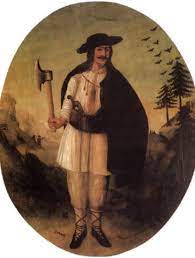
Ukrainian intellectuals did not appropriate their own culture and that of the Carpathian region until the second half of the 19th century. Paradoxical as it may seem, the emergence of Ukrainian nationalism was the result of the creation of universities and the promotion of Slavic studies by the government of Nicholas I, which wished to protect Russia from the influence of Western republican ideas. Ukrainianophilia”, exemplified in the 1830s by the success of the Ukrainian stories of the writer Nicholas Gogol (1809-1852), contributed to the refocusing of ethnographic studies in the specifically Ukrainian field and generated a radicalisation of identity among intellectuals in the second half of the 19th century. Through his work, the poet Taras Shevchenko (1814-1861) elevated Ukrainian to the status of a literary language and became a champion of Ukrainianness. His journey – he was arrested in 1847 and sentenced to prison and then exile – made him a heroic figure in Ukrainian history.
In the “Austrian” part of Ukraine, the context was more favourable than in Russia for the formation and expression of a Ukrainian national feeling. The writers of the literary group, “The Ruthenian Triad”, Markiyan Chahkevich (1811-1843), Yakiv Holovatsky (1814-1888), Ivan Vahylevich (1811-1866) and, later, authors such as Ivan Franko (1856-1916), favoured the democratisation of Ukrainian literature and the transition from an elitist nationalism to a “popular” populism. One of the high points of this cultural effervescence was the creation of the Shevchenko Society in Lviv (Lemberg) in 1873, whose chair of Eastern European history was occupied from 1894 by the historian and politician Mykhaïlo Serhiïovytch Hrouchevsky (1866-1934)
In 1917, Hrushchevsky was elected president of the Ukrainian parliament, the Rada, and under his leadership, Ukraine declared its autonomy on 23 June 1917. Earlier, as a prominent member of the Shevchenko Society, he contributed to the large-scale development of ethnographic studies, the results of which were published between 1895 and 1929 in the series entitled The Ethnographic Collection. Among the leading figures who collaborated in this work were the ethnographers Volodymir Shukhevich (1849-1915) and Volodymyr Hnatiuk (1871-1926), who distinguished themselves by their studies in the Hutsul country and by the collection of numerous folk tales with Jewish characters, recounting the exploits of the local Robin Hood, Oleksa Dovbush (1700-1745), and his companions, the “oprychky“, also known as the “boys of the forest. As the Ukrainian film specialist Lubomir Hosejko points out, “a popular hero fighting against compulsory conscription into the Austrian army and a fighter against the omnipotent magnates of the Hungarian and Polish nobility, Oleksa Dovbush very early on became part of the Hutsul psyche, both in terms of the vital and the thinking principle. Nowadays, L. Hosejko adds: “Today, the people see Oleksa Dovbush as a symbol of (Ukrainian) national identity.
Like the great national heroes, Dovbush is a polysemous figure whose story borrows from historical reality and epic tales. A man and a demigod at the same time, he is part of a system of identifiable references (the Carpathian landscape, the struggle against the lords) and an epic imagination: the axe he wields with dexterity recalls that of the Arthurian legend and his abundant hair from which he draws his strength connotes biblical mythology. His invulnerability, which only the love of his mistress can undermine, gives his character an exemplary ethical dimension. He is ready to sacrifice himself for his people.
In Ukrainian stories and legends, the Jews usually acted as economic intermediaries between the Ruthenian peasants and the Polish lords. On their estates, the labourers performed chores and were subject to taxes and rents, just like the Jews who were also employed as sharecroppers in the administration of the lords’ estates. This system was the source of the hostility of the Ruthenian peasants towards the Jews, as the latter received a share of the income of the estate as a pledge for financial loans. In addition to the management of the estates, the nobles granted the Jews, in the form of leases, the use of the distilleries (hence the recurrent accusation that the Jews drove the peasants to inebriation), mills and inns.
The Jews in these stories correspond to the usual clichés conveyed by popular folklore and the ‘antisemitic’ doxa. They are greedy and deceitful. They collect money and cheat the peasants. But above all, and this is the specificity of the stories collected in Carpathia, the Jewish characters are presented in an original way for non-Jewish literature. Some of them, such as the Jew with Herculean strength, in the eponymous story, manage to make Dovbush bite the dust. There are also Jews who shoot guns to defend themselves from the oprychki, shepherds and craftsmen whose way of life differs little from that of the peasants. They are often regarded by the villagers as men and women like any other, as somewhat stupid and naïve neighbours who are fun to make fun of, more or less rudely. The truculent and bawdy character of these stories demonstrates the close proximity between Jews and Ukrainians in the Carpathian villages.
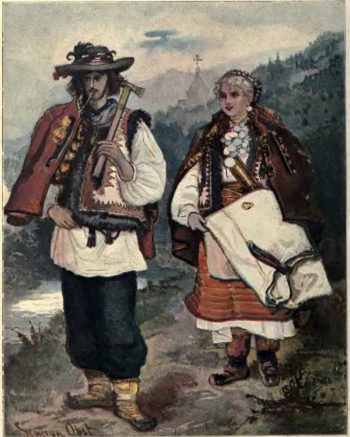
However, these contacts were not limited to the economic and material spheres. They also concerned the sacred, magic and medicine. In the Hutsu stories, the rabbis of the Hasidic courts appear as miracle workers, magicians and doctors with extraordinary powers. This presence corresponds to a historical reality. The economic domination exercised by the Jews was in fact favoured by a certain correspondence between the functioning of the Polish nobility and that of the Hasidic communities. Just as the authority of a lord was exercised according to a pattern of concentric circles with an ever-widening radius, starting from the members of his family and extending down to the peasants, the head or rebbe of a Hasidic court based his material power on a network that spread out in rhizomes, stretching from his court to his relatives and followers. It is certain that the management of the estates created an important social differentiation between the Ruthenian peasants and the Jews who, in the tales and legends of the Carpathians, often act as enemies and adversaries. But these same folk tales show that the relationship between Jews and Ukrainians was not limited to economic and commercial relations. Shukhevych cites the case of Hutsul shepherds who produced kosher cheese. Hnatiuk mentions the “Jewish Ivans” who served on the Sabbath. Often, too, there are references to Jewish magic, amulets, and hybrid religious practices that include the ‘other’ in rituals that drift towards animism and pagan practices. Jewish magic and its practitioners were part of the everyday landscape of the villages and towns of the multi-ethnic communities that lived in virtual isolation in the mountains.
It is therefore not surprising that certain common allusions, such as those to the devil, for example, are found in Jewish and Hutsul folklore. He appears under the hypostasis of the Dybbuk in the eponymous play by the ethnographer Anski and as Didko in many Hutsulian songs. In one of them, the evil spirit is driven out of the body of a girl it has taken possession of and escapes, as in Anski’s play, through the victim’s little finger.
If Jews are found in Ukrainian stories, Ukrainian characters are also present in Jewish tales and legends. This concomitant presence is a characteristic of this form of hybrid culture, Jewish and Ukrainian.
The Baal-Shem Tov: another national hero?
The Jewish storytellers of the Hasidic communities – which were particularly numerous in Ukraine and, more specifically, in the Carpathian region – considered legends and shevahim (praises) as a way to glorify the miraculous and mystical abilities of the rebbes (Hasidic rabbis). Among these rebbes, Israel Ben Eliezer, known as the Baal Shem Tov (1700-1760), a native of Medjybij and contemporary of Dovbush, was one of the most famous. His figure, as well as the accounts of his adventures, the Shivhei ha-besht or Book in Honour of Besht published in 1815, were appropriated in the second half of the 19th century by Jews seeking a rebirth of Jewish identity.
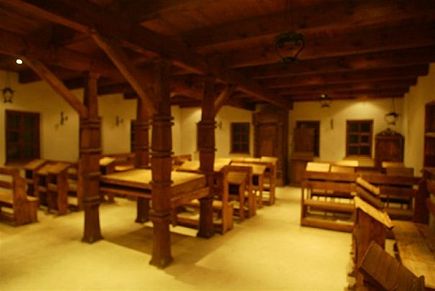
The self-perception of the Jews on both the Russian and German sides was initially ambivalent. The literature of the ghetto or Ghetonovelle offered critical pictures of the backwardness of the religious obscurantism embodied by Hasidism and Orthodoxy as opposed to the Enlightenment movement. But it also gave positive representations of the lost traditions of community life in a territory, the Carpathians, preserved from the influences of civilisation. Subsequently, and particularly after the wave of pogroms in 1881, the desire to establish a national, secular and Jewish culture as the basis of a new national identity took shape in a powerful political consciousness, one of the avatars of which was Zionism. The conception of the people as the subject of its own history prompted Jewish scholars, advocates of a renewed, Zionist conception of the Jewish world, to direct their research towards the eastern confines of Europe, the Ukraine, Galicia and the Carpathians.
The first to travel to Galicia to carry out statistical surveys of the Jewish population was Arthur Ruppin (1876-1943), the father of Jewish sociology. Based on the racialist theories of the time, he found that the Jews of the East and the West (Westjuden and Ostjuden) had common physical traits and that they were indeed two branches of the same nation whose reunion would lead to its revitalisation. In the same vein, in his article “The Jewish Renaissance” published in 1901 in the magazine Ost und West, Martin Buber advocated the need for the reunification of the two Western and Eastern “hemispheres” of the Jewish world. Buber, raised by his grandfather in Lviv, embodied that generation of Jewish intellectuals committed to Zionism and exalting in their writings the primal strength of the Jews of the borders. This approach was in line with the Zionist valorisation of the image of the peasant as the healthy body of the people, eventually ready to defend the Jewish nation.
In Buber’s German adaptation of the Baal Shem Tov stories, the text is stripped of many biblical references found in the original version. On the other hand, a great deal of space is given to descriptions of nature. This choice, as well as the depiction of the Hutu bandits ready, for example, to lead the rebbe to the Holy Land, testified to Buber’s affinity with a romantic conception of the people and the return to nature.
In addition to Buber, Jewish ethnographers devoted themselves to the collection of Jewish folk tales, stories and songs, such as Benjamin Wolf Segel (1866-1931), the folklorist Anski (1863-1923), the musicologists Youli Engel (1868-1927), but also Shloyme Bastomski (1891-1941) and Leib Cahan (1881-1937). As a sign of the times, the first volume of Yiddish stories published by Cahan in 1931 included stories collected from Jewish emigrants arriving in the USA. After the Shoah, the Israel Folktales Archives (IFA), created in honour of Professor Dov Noy, born in 1920 in the Houtsul town of Kolomya, became the main centre for the study and archiving of Jewish folk culture.

From Joseph Roth (1894-1939) to Aharon Appelfed (1932-2018), Jewish writers whose works are set in the Carpathians are particularly numerous. In the stories and poems of Samuel Agnon (1888-1970), Naftalie Gross (1897-1956), Shimon Meltzer (1909-2000), as well as of the last Yiddish-speaking writer in Ukraine, Yossif Bourg (1912-2009), and in the songs of the Ukrainian-born Israeli bard Daniel Klouger (1951-), to name but a few, the Ba-al Shem Tov embodies spiritual power and wisdom in contrast to the physical strength of Dovbush and his men.
A poem by the writer Naftoly Gross illustrates this distribution of roles. I give only an extract:
Dovbush spent the whole night in the mountains feasting
His companions brought him the most delicious dishes,
Then we danced, whistled, played the violin and sang.
The Baal Shem Tov meanwhile walked through the forest,
Talking with the wind and the pine needles
Hugging each tree like a friend, a family member.
Stomping his bare feet on the frozen snow,
He spoke with G-d as an equal
Praising with each step the earth beneath his feet.
(…)
Before the Baal Shem Tov and Dovbush
Borders and barriers disappear,
And men bow down in devotion and prayer.
Pride is appeased and bows,
While love to them stretches,
And trees and grasses and fountains,
Like mills rustle and murmur,
In the ears of Dovbush and the Baal Shem Tov.
Naftoly Gross (1897-1956) was already living in Canada when he wrote his poetry. His gaze is turned towards a past and a space that he idealizes and depicts as a haven of Jewishness and communion with non-Jews. This nostalgia, which runs through all the works of the Jewish authors from this region who survived the Shoah, is absent from Ukrainian stories, tales and legends as well as from literary accounts and, more broadly, from Ukrainian memory. This imbalance in the perception of the past certainly explains the complexity of the dialogue between Jews and Ukrainians today. Jews have sublimated reality to the point of nostalgia. The Ukrainians have kept the memory of it, while trying to hide the most negative aspects, especially their tragic compromise during the Shoah. For the Jews, Ukraine is a dream, a myth. For Ukrainians, Ukraine without Jews has long been an accepted reality.
***
Jewish parable in conclusion. One day, when the Baal Shem Tov was lost in thought and about to fall to the bottom of a precipice, Dovbush and his men saw the mountains approaching and the gap closing before their eyes. Fascinated by this sight, the brigands asked the Baal Shem Tov to pray for them and to put his magic at their disposal. The holy man agreed on condition that they stop persecuting the Jews and ensure their safety. According to a disciple of the Baal Shem Tov, Menachem Nahum Tverski (1730-1790), the rebbe said to the oprychki: “You will be the leaves of the vine and we will be the grapes that the leaves protect.”
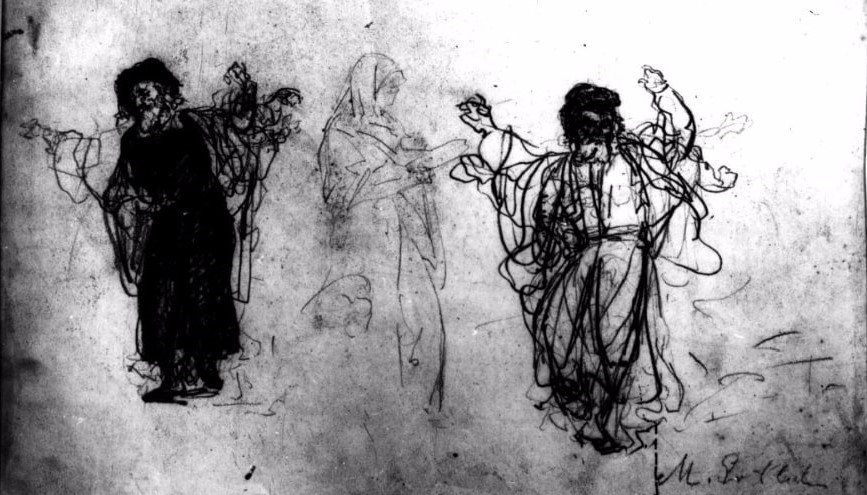
Jews from Ukraine, their children and grandchildren have kept the nostalgia of a certain Jewish-Ukrainian air made of cooking smells, melodies and landscapes. They also remember that the Ukrainian leaves did not always protect the Jewish grapes as the Baal Shem Tov enjoined. Did they even try? The uneasiness comes from there, from the struggle deep inside us between this spite that we find hard to loosen and this desire for harmony and cohabitation that sometimes makes us say that we are also from there, from Ukraine.
In the war between Russia and Ukraine, the aggressor is Russia. Blinded by hatred, it dreams of denazifying, of “deukrainising” Ukraine. It is not a question of mistaking the enemy and of sparing her in the name of some respect that she does not even have for herself, but please, let Ukraine not ask us to forget the past, even at the cost of pretty tales and legends.
Boris Czerny
Notes
| 1 | It is generally estimated that one and a half million Ukrainian soldiers and five million civilians, inhabitants of the Ukrainian Soviet Republic, among them 900. 000 Jewish victims of mass murder by the Einsatzgruppen, perished during the Second World War. |
